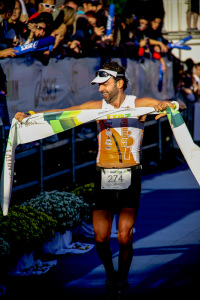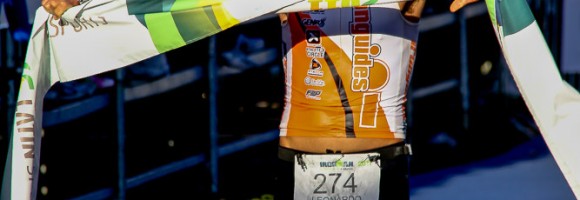By Alun Woodward – online coach ironguides.net
Finally race season has arrived and all your hard training over the winter months is going to be put to the test, we have all heard the saying winter miles equals summer smiles. While this saying does hold true to an extent in order to make all your effort over the winter come to fruition a little bit of focus on planning now will go a long way towards making your races successful.
So many times an athlete can do everything right in training and yet their race season can be summed up as consistent bad luck – how many times have you heard a fellow competitor complaining of bad luck? The bad luck always tends to be in the form or nutritional problems, mechanical problems, pacing problems and the list can go on. While there are of course going to be cases of bad luck most times its more an issue of bad planning and preparation for the race.
Racing triathlon is a lot more than simply swim bike and run, we need to make sure the fine details are looked after in order to enjoy our fitness to the max.
Equipment is one of the biggest issues i see time and time again and the problems present in many forms.
Heading to those early season races we never truly know what the weather is going to do on race day, do not trust the forecast as they can be wrong! Pack for all outcomes, don’t be that athlete running around the expo searching for cold weather gear as you have just packed for a warm race. Bad weather is not bad luck, not being dressed for the weather is your own fault.
Aside from weather issues punctures are the biggest mechanical issue that destroy peoples races, yes a puncture is bad luck to an extent but we can go a long way to reducing the issue, making sure you look at course and environment and weather leading up to the race can help you make sensible tire choices to reduce your risk of punctures. If your racing late spring early summer and the local area has just seen a lot of stormy wet weather then you can bet a lot of debris has been washed onto the roads – even if the roads are great quality this debris increases risk of puncture and suggests you should use a more puncture resistant tire over slick pure racing tires.
Other issues on the tire front could be the bike course passing farm land that is heavily in use at that time of year, hedgerows that have recently been cut placing thorns onto the roads.
When we put the time commitment into training and financial commitment into racing big events with potential qualification at stake then thinking about your tire choice for the race is very important. Andy Potts finished 4th at the Kona World Championships in 2015 riding ultra protective tires over the without question much faster slick racing tires he could have chosen. There has been a lot of talk over the fact this choice could have cost him the win but a puncture on faster tires is a lot more likely and that could have cost him a lot more time or even a DNF.
While there are many more mechanical examples something coming loose is the other major complaint – and once again this is not really bad luck more a case of the athlete did not check the bike over before putting into into transition. Travel and the vibrations involved will loosen screws, also the change in temperature and air pressure will have an effect on the tightness of screws so make sure you check everything over before placing your bike into transition – just because you have had no issue for months does not mean you will not have on race day, the extra tension and strain on the bike during a race will cause any loose screw to lead to a major problem.
For those using electric gears – travel with your charging cables and make sure to charge the battery before your race – amazing how many times recently i have read that peoples gears suddenly ran out of power on race day!
One you have done your best to ensure mechanical issues are minimised to the maximum effect you need to look at other areas that could effect your race. The next big issue is nutrition, how you fuel your body is very important and even without too much thought when your home you will have the bases covered with what your eating and when but when your suddenly put into a new environment away from home the same food choices are not always available. Packing your favourite or regular snacks and scouting out race location for restaurants that serve the food you like to eat pore race goes a long way to solving any potential issues. Don’t just rock up to your race location and expect top find what you want, not only then is finding a restaurant that serves what you want an issue also you have to remember there are going to be a lot of other athletes in town looking to eat the same thing so restaurants may well be booked or out of your typical athlete dishes by the time you get served!

Race nutrition is also important, if you have a favourite energy drink, gel, bar, salt tablet make sure you have plenty of these to travel with to the race, amazing again how often the jar is suddenly empty when you go to your first race and you only notice with one day to go – while your favourite tri shops will do their best to get your product delivered in time its better to have taken care of this a little while out from the race not 1-2 days before you travel. NEVER count on the race expo having that your looking for – always take your own, a different product on race day can make all the difference between a good race and a terrible race – also if your travelling to a foreign country to race you need to be aware that the same product can be made with different ingredients – a mars bar in the UK is very different to a Mars bar in the USA!
While mechanical and nutritional issues are the main things a lot of athletes overlook there are many more things we can think about in order to maximise race results. Sleep quality before the event is important, sleeping in a foreign environment is unsettling for the brain, most people do not sleep well the first night in a hotel, maybe travelling one or 2 days extra before the race will ensure your sleeping better and therefore fresher and more prepared to race come the big day. Making sure you have race kit and shoes ready weeks before the race too – don’t remember you need to print kit the week of the race as its unlikely you will be able to get this done at such short notice.
As we head into the race season spend a little time making sure you have everything ready to race, put effort into your planning to make sure your race day goes as smoothly as possible – booking flights and a hotel is not the start and end of your planning!
Enjoy your training.
–
Train with ironguides!
Personalized Online Coaching: Starting at USD190/month
Monthly Training plans (for all levels, or focused on one discipline): Only USD39/months
Event based training plans:
Sprint Distance (USD45 for 8-week plan)
Olympic Distance (USD65 for 12 week plan)
Half Ironman (USD95 for 16-week plan)
Ironman (USD145 for 20-week plan)
X-Terra (USD65 for 12-week plan)
Running Plans (10k, 21k and 42k – starting at USD40)


Recent Comments